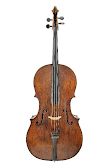Giovanni Battista Grancino I und Giovanni Battista Grancino II
1637–1709 and 1673 until after 1726For a few decades, the Grancino family – above all Giovanni Battista I and his son, Giovanni Battista II – were among the most influential violinmakers in Milan. They counted several musicians among their ancestors. Giovanni Battista I was born in 1637. He ran a workshop in Milan’s Contrada Larga together with his younger brother, Francesco. Accordingly, the first instruments to leave the shop from 1670 bore the label “fratelli de Grancini” (Grancini brothers). From 1685, only Giovanni Battista’s name features on the labels, and the workshop employed several notable artisans, such as Carlo Giuseppe Testore and Antonio Maria Lavazza. Giovanni Battista II, who was born in 1673, also trained as a violinmaker and was predestined to take over his father’s workshop one day. Yet fate would have it otherwise: Giovanni Battista II killed his fellow violinmaker Lavazza in a sword duel in 1708 and was sentenced to death, though he was pardoned later. The Milan authorities confiscated the entire Grancino family property, including the workshop. Giovanni Battista II continued to work as a luthier, with the latest preserved instruments dated 1726. Grancino’s sons also learned the craft, but the quality of workmanship deteriorated markedly after 1710.
The first instruments built by the elder Giovanni Battista reflected the influence of Cremona’s master luthiers; from 1685, Grancino developed his own style. After about 1690, father and son probably worked side by side and produced a considerable output. However, it is difficult to attribute the instruments to one or the other maker. The dramatic events surrounding the prosecution of Giovanni Battista II brought this productive period to an abrupt end, and production recovered only gradually. Instruments made in Grancino’s workshop have a high tone quality, with the violoncellos being particularly in demand today.

